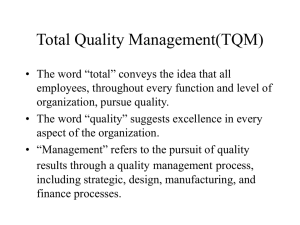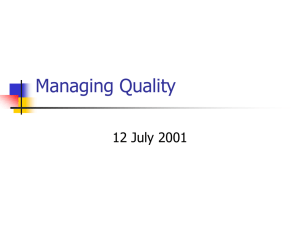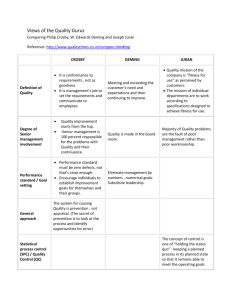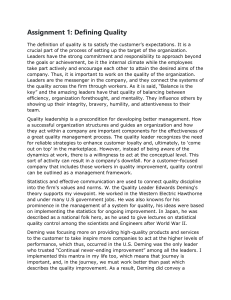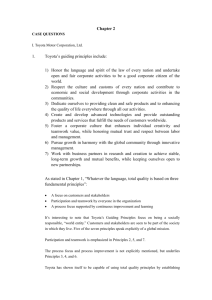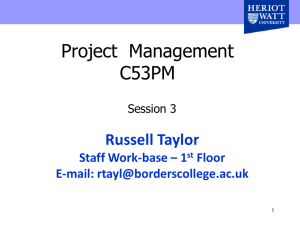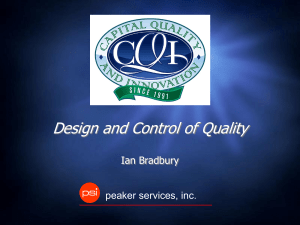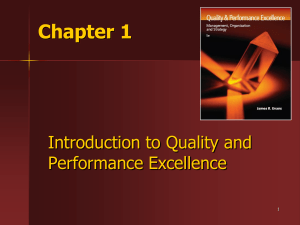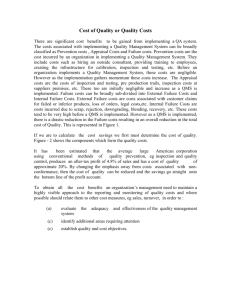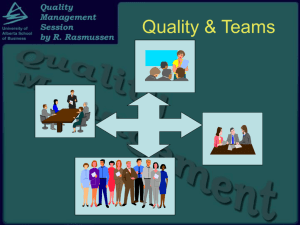The 14 Points of Deming
advertisement
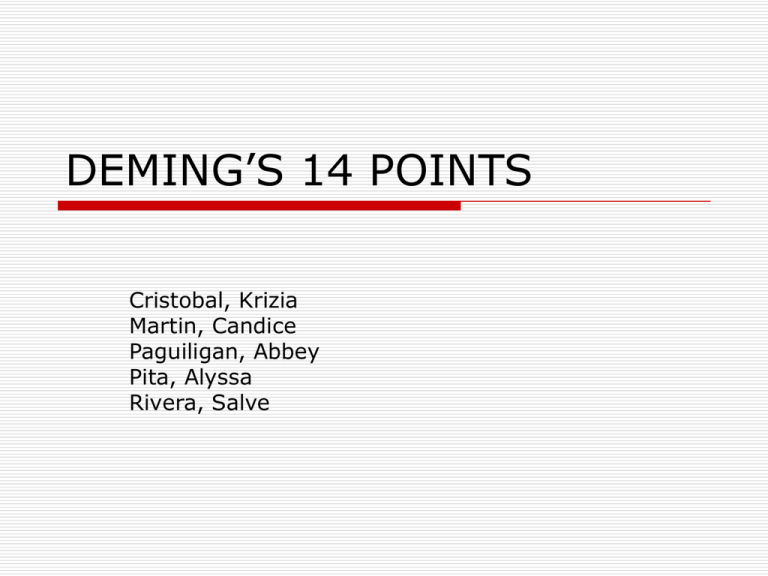
DEMING’S 14 POINTS Cristobal, Krizia Martin, Candice Paguiligan, Abbey Pita, Alyssa Rivera, Salve Point 1: Create a Vision and Demonstrate Commitment An organization must define its values, mission, and vision of the future to provide long-term direction for its management and employees. Businesses should not exist simply for profit; they are social entities whose basic purpose is to serve their customers and employees. Point 2: Learn the New Philosophy Companies must take a customerdriven approach based on mutual cooperation between labor and management and a never-ending cycle of improvement. Point 3: Understand Inspection Inspection - the principal means of quality control. Routine inspection acknowledges that defects are present, but does not add value to the product. Inspection should be used as an information-gathering tool for improvement, not as a means of “assuring” quality or blaming workers. Point 4: Stop Making Decisions Purely on the Basis of Cost The supplier and manufacturer must be considered as a macro organization. Deming urged businesses to establish longterm relationships with fewer suppliers, leading to loyalty and opportunities for mutual improvement. Supply Chain Management (SCM) focuses heavily on a system’s view of the supply chain with the objective of minimizing total supply chain costs and developing stronger partnerships with suppliers. Point 5: Improve Constantly and Forever Improved design of goods and services comes from understanding customer needs and continual market surveys and other sources of feedback, and from understanding the manufacturing and service delivery process. Improvements in operations are achieved by reducing the causes and impacts of variation, and engaging all employees to innovate and seek ways of doing their jobs more efficiently and effectively. Deming chain reaction: When quality improves, productivity improves and costs decrease. Continuous improvement Point 6: Institute Training Training - results in improvements in quality and productivity - adds to worker morale - demonstrates to workers that the company is dedicated to helping them and investing in the future Point 7: Institute Leadership The job of management is leadership, not supervision. Supervision – simply overseeing and directing work Leadership – providing guidance to help employees do their hobs with less effort. Point 8: Drive Out Fear Fear is manifasted in many ways: fear of reprisal, fear of failure, fear of the unknown, fear of relinquishing control, and fear of change. Fear encourages short-term thinking Fear is a cultural issue for all organizations Point 9: Optimize the Efforts of Teams Teamwork helps to break down barriers between departments and individuals. Barriers between functional areas occur occurs when managers fear they might lose power. Lack of cooperation leads to poor quality. Point 10: Eliminate Exhortations Motivational approaches overlook the major source of many problems – the system Causes of variation stemming from the design of the system are management’s problem, not the workers’ Point 11: Enumerate Numerical Quotas and Management by Objective (MBO) Many organizations manage by the numbers. Goals are useful, but numerical goals set for others without incorporating a method to reach the goal generate frustration and resentment. Management must understand the system and continually try to improve it, rather than focus on short-term goals. Point 12: Remove Barriers to Pride in Workmanship Deming believed that one of the biggest barriers to pride in workmanship is performance appraisal Performance appraisal destroys teamwork by promoting competition for limited resources, fosters mediocrity because objectives typically are driven by numbers and what the boss wants rather than by quality, focuses on the short term and discourages risk taking, and confounds the “people resources” with other resources. Three categories of performance: Majority of performances that are within the system Performances outside the system on the superior side Performances outside the system on the inferior side Point 13: Encourage Education and Self-Improvement Continuing, broad education for selfimprovement Organizations must invest in their people at all levels to ensure success in the long term Developing the worth of the individual is a powerful motivation method Point 14: Take Action Any culture change begins with top management and includes everyone Team-based approach
